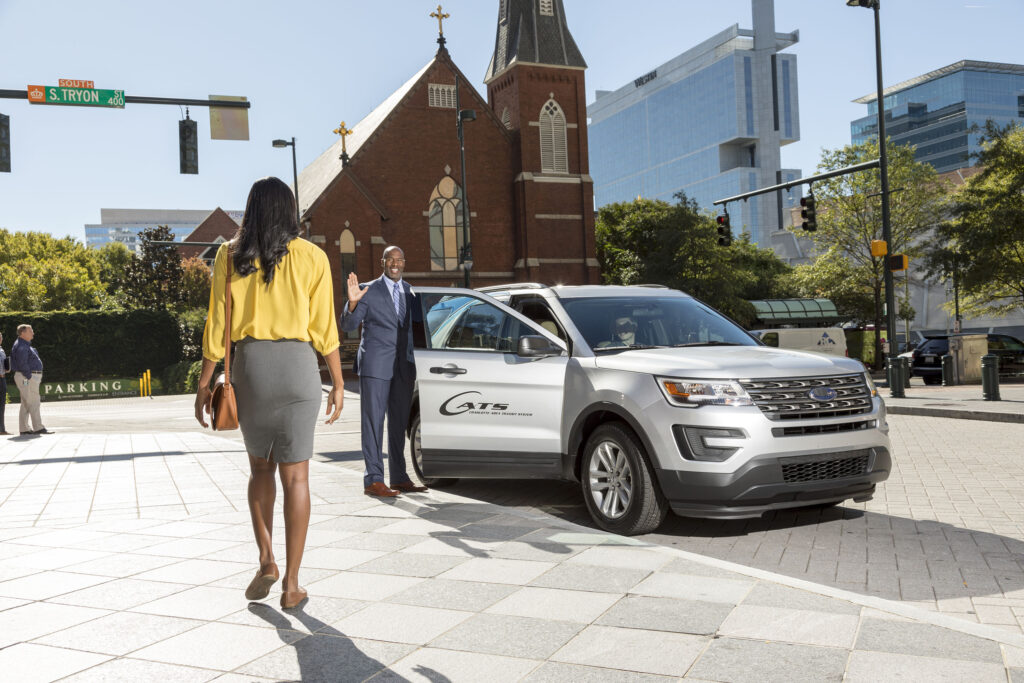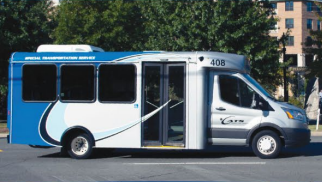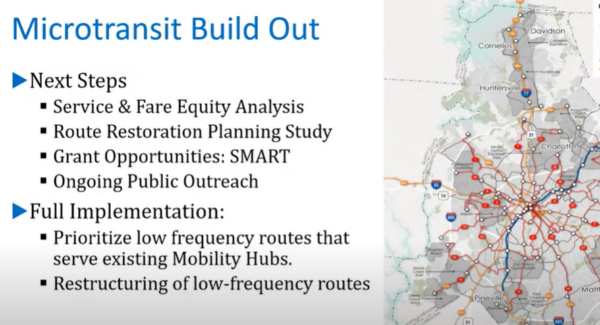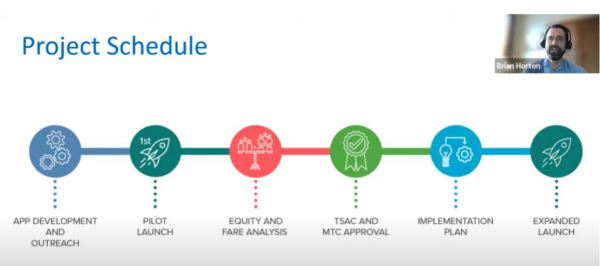Microtransit is coming to cats. What does that mean?

Photo: Charlotte Area Transit System
If you live in Huntersville, Cornelius, and Davidson, perhaps you’re familiar with North Meck Village Rider, a bus service with three dedicated routes that connect to several Charlotte Area Transportation System (CATS) fixed-route services and two park-and-ride stops. While the North Meck Village Rider follows a set schedule along the main routes, it also serves destinations up to ¾-mile off of them. Riders can schedule a pick-up and drop-off point and time with a customer service agent one day in advance.
Soon, CATS will pilot a microtransit program that may replace the North Meck Village Rider network.
What is Microtransit?
On-demand public transit, or microtransit, allows people to request a ride – usually in a van or shuttle – on their phone. The rider pays a small fare, is picked up close to their location, and taken where they need to go, like a bus stop or other fixed-route service. Microtransit often operates within a designated service boundary.
There are some benefits to this type of on-demand public transit. Microtransit may be a more efficient alternative to running a full-sized bus on a fixed route that doesn’t reach many riders or attract riders who don’t currently live near a fixed-route service. On-demand public transit is available to anyone within the designated service area and can fill gaps in the transit system.
On the other hand, microtransit can be costly and inefficient, serving fewer people at a higher cost. Drivers may not be equipped or trained to help people with disabilities. Importantly, unless new external funding is secured (such as a grant for a pilot program), spending on microtransit requires diverting funds that might otherwise go toward increased frequency and improving bus stops that would increase ridership along fixed bus routes.

The way we think about microtransit
The general trend among transit advocates is to view microtransit as a potentially useful tool to make first/last mile connections and provide service in areas where the meandering street network or low population density makes it difficult to serve efficiently with fixed-route service.
However, microtransit is a quite new concept that is still being tested across the country. Pilot projects are revealing both pros and cons. We share the concerns of many transit advocates that replacing fixed-route service with microtransit raises many questions of equity for riders and drivers. Microtransit is more costly per ride (except when replacing fixed-route service with very low ridership),, relies on workers who are independent contractors (which means few safeguards around job security, pay, and benefits), and may require riders to have access to a smartphone.
There is also concern about the long-term sustainability of replacing public transit vehicles and operators with the service, vehicles, and drivers of a privately owned company. Many microtransit programs are currently being funded through pilot programs. Will microtransit companies be able to survive and be operationally profitable beyond the pilot period, while also providing a good value for transit agencies and taxpayers? Another concern is that transit agencies could potentially lose state maintenance assistance program funding if fixed route service ends.
What’s happening here
The CATS-specific microtransit program is being implemented in two phases with $750,000 in federal pilot funding. The first phase will serve the University and North End areas using small CATS vehicles and third party companies, like Uber and Lyft, to operate as first/last mile options.
Phase two will replace the North Meck Village Rider network in Huntersville, Cornelius and Davidson. Service will be provided by a contracted operator that will manage vehicles and drivers. Rides are expected to cost $2.20, the same as a bus fare. Riders will book trips through the CATS app.

Photo: Charlotte Area Transit System
What comes next
A full zone launch is scheduled for 2024 and would fully replace the North Meck Village Rider buses with point-to-point service on third-party contracted vehicles.
Could microtransit help Charlotte to meet its goal of shifting our current mode share of 76% of trips taken by driving alone to less than 50% by 2040? It depends on how efficiently microtransit is able to transport multiple riders at the same time. A recent study at NC State University (view presentation at the 44-minute mark here) found that for the six transit agencies in NC currently using or testing microtransit, the vehicles are usually underutilized. This means a low proportion of trips are shared with another boarding. Microtransit vehicles would need to efficiently serve multiple riders simultaneously in order to be cost-effective and help to reduce the need for new road capacity. It’s also important to continue investing in safe bicycle and pedestrian infrastructure so that people riding fixed-route public transit can safely reach it without a car, and to meet the needs of people using walking and bicycling for transportation.
Microtransit has the potential to increase equitable access to public transit if it’s used appropriately. We hope that CATS will use this pilot program to gather and then analyze data about the ways that microtransit can benefit our community, while also discovering what its limitations are. We are eager to see the results and will continue to advocate for safe, reliable public transportation options for all.
Watch CATS’ virtual public transit meeting on its microtransit plans.

Photo: Charlotte Area Transit System
Thanks for reading!
As a nonprofit, community support is essential for us to keep doing what we do — including providing free articles like this. If you found this article helpful, please consider supporting Sustain Charlotte so we can continue advocating for a better future and working with residents, neighborhood organizations, government agencies, nonprofits, and businesses to solve the most critical challenges to Charlotte’s long-term social, economic, and environmental health.
Want to stay in the loop? Subscribe to our free, weekly newsletter and follow us on Twitter, Facebook, and Instagram.
